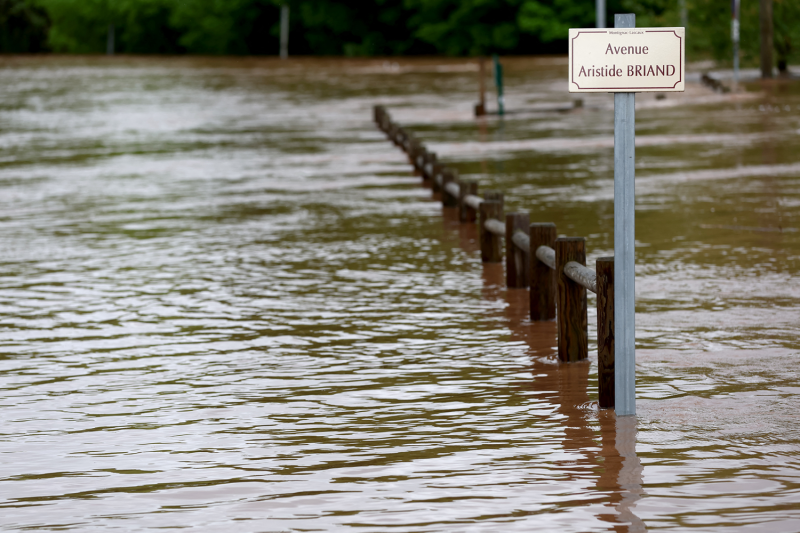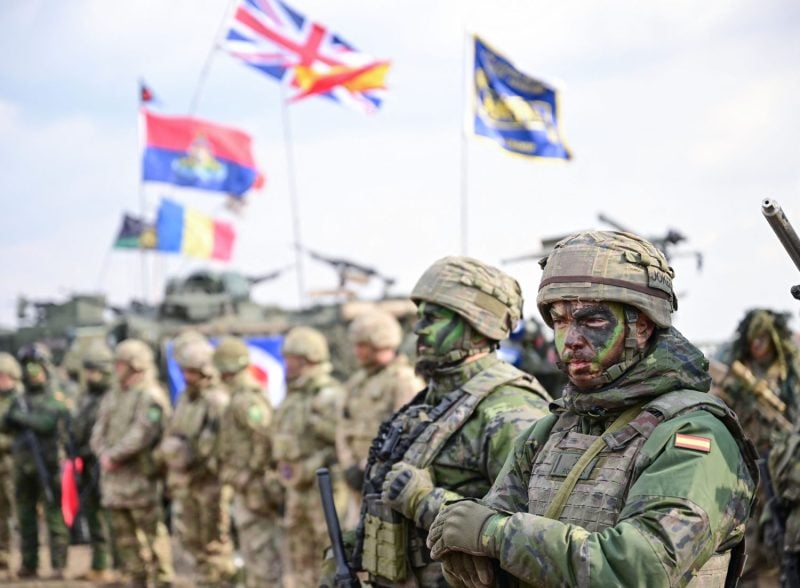Vance Travels to India With High Stakes

Vance Travels to India With High Stakes
The U.S. vice president’s trip came ahead of bilateral trade talks in Washington.
U.S. Vice President J.D. Vance, Second Lady Usha Vance, and their children pose for a photo in front of the Akshardham Temple in New Delhi on April 21. Kenny Holston/Pool/Getty Images
Welcome to Foreign Policy’s South Asia Brief.
The highlights this week: U.S. Vice President J.D. Vance makes a high-profile trip to India with his family in tow, militants in Indian-administered Kashmir kill at least 26 tourists at a resort, and South Asian trade delegations arrive in Washington for the World Bank and International Monetary Fund spring meetings.
Welcome to Foreign Policy’s South Asia Brief.
The highlights this week: U.S. Vice President J.D. Vance makes a high-profile trip to India with his family in tow, militants in Indian-administered Kashmir kill at least 26 tourists at a resort, and South Asian trade delegations arrive in Washington for the World Bank and International Monetary Fund spring meetings.
Vance Travels to India
India’s government pulled out all the stops welcoming U.S. Vice President J.D. Vance to New Delhi this week. An cabinet official, Railways Minister Ashwini Vaishnaw, greeted Vance and his family at the airport on Monday, and the capital was decked with U.S. flags.
Indian Prime Minister Narendra Modi met Vance on Monday, bringing along two of his top foreign-policy aides: External Affairs Minister S. Jaishankar and National Security Advisor Ajit Doval. And on Monday evening local time, before Vance and his family left New Delhi for a few days of sightseeing in Jaipur and Agra, Modi hosted them for dinner.
This was an especially significant trip. U.S. vice presidents rarely visit India: Vance is just the third to do so in the last 40 years, following Joe Biden in 2013 and George H.W. Bush in 1984. Additionally, second lady Usha Vance is Indian American, adding a level of cultural importance to the visit.
Many senior U.S. officials have visited major tourist sites during trips to India. But for Vance’s family, these excursions aren’t purely symbolic; by leveraging the second lady’s heritage, they could amplify cultural linkages and strengthen bilateral cooperation. Former Vice President Kamala Harris often spoke of her own Indian ancestry—including during Modi’s state visit to Washington in 2023—but she never visited India while in the role.
U.S.-India relations are now at a pivotal moment. New Delhi is keen to begin formal talks on a trade deal with Washington that would reduce tariff and non-tariff trade barriers, limiting the potential economic damage if U.S. President Donald Trump reinstates the 26 percent levy he imposed on India before announcing a 90-day pause on April 9.
In February, Modi and Trump pledged to pursue a trade deal, but India and the United States have positioned themselves to begin negotiations only in recent days. Just before Vance’s arrival, the two sides agreed on the terms of reference for the talks. On Wednesday, an Indian delegation was due to arrive in Washington to hash out any outstanding issues, with the talks expected to begin soon afterward.
Vance himself further raised the stakes of this week’s visit: The vice president has emerged as a central player in the Trump administration’s foreign policy. His views about the trade talks, a likely key point of discussion with Modi, carry significant weight. Based on an Indian readout of the Vance-Modi meeting, which noted that the two “welcomed the significant progress” in negotiations, the vice president’s appraisal was positive.
Moreover, a speech that Vance gave on Tuesday at the Rajasthan International Centre in Jaipur—during which he warned of a “very dark time for all of humanity” if the United States and India don’t “work together successfully”—could be seen as a definitive take on the Trump administration’s broader India policy.
As important as Vance is, much of his trip was carried out with an eye toward his boss. One of his key objectives was to lay the groundwork for Trump’s expected trip to India later this year for a Quadrilateral Security Dialogue leaders’ summit. Trump is a proponent of partnership with India, but he is also averse to foreign travel. (He did visit India in 2020, during his first term.)
Vance’s visit to India provided an opportunity for both sides to make sure that Trump’s plans are still on track and as a result to ensure momentum in bilateral relations amid all the uncertainties and volatility linked to commercial ties.
What We’re Following
Dozens killed in Kashmir. On Tuesday, militants opened fire at a tourist spot near Pahalgam in Indian-administered Kashmir, killing at least 26 people, most of them Indian; one was identified as a Nepali national. A little-known Kashmiri group known as the Resistance Front claimed responsibility for the attack, though the Indian government has not acknowledged the claim.
The militants likely sought to puncture the Indian government narrative that normalcy and stability have been restored in Kashmir after New Delhi’s 2019 decision to revoke the region’s special autonomous status. That the attack happened while Vance was in India suggests those responsible may have also wanted to bring U.S. attention to the situation in Kashmir.
Trump condemned the attack—one of the deadliest attacks on civilians in India in years—and on Wednesday, Vance spoke to Modi by phone and said the United States “is ready to provide all assistance,” according to India’s Ministry of External Affairs.
India will likely assume some complicity from Pakistan, which has backed militant groups that staged attacks in Kashmir in the past. In 2019, Jaish-e-Mohammed, a Pakistani organization, carried out an operation that killed more than 40 Indian troops in Pulwama, prompting India to launch retaliatory airstrikes against what it said were terrorist targets in Pakistan.
India-Pakistan relations are now relatively calm, but the scale and targeting of Tuesday’s attack suggest that New Delhi will respond, likely with muscle. Indian officials cut two high-stakes international engagements short in response, with Modi departing Saudi Arabia and Finance Minister Nirmala Sitharaman leaving the United States with trade talks set to begin.
Though New Delhi will likely consider military options, it announced other dramatic steps on Wednesday: suspending the Indus Waters Treaty with Pakistan; closing Attari-Wagah, the main land border crossing for each country; and downgrading diplomatic ties. Based on its initial messaging, the United States likely won’t try to stand in the way of Indian retaliation.
Trade delegations in Washington. The World Bank and International Monetary Fund (IMF) spring meetings began this week, bringing senior trade and finance officials from across South Asia to Washington. This year, delegations will also look to meet with Trump administration officials to try to avoid being hit with higher tariffs when the 90-day pause on the levies ends.
Bangladesh, India, Pakistan, and Sri Lanka—the South Asian countries initially hit with tariffs in addition to a 10 percent universal levy—are all sending prominent officials to Washington for this purpose. India enjoys an advantage over its neighbors because it received a commitment from the United States in February to pursue trade talks.
The discussions that officials from the other countries will have with their U.S. interlocutors this week will likely be less focused. Still, the clock is ticking, and these countries have some of the most fragile economies in South Asia and will want to do everything they can to keep extra tariff impacts at bay.
Afghanistan, Pakistan pledge cooperation. Since the Taliban returned to power in Kabul in 2021, Pakistan’s relations with the group—an ally during the war years in Afghanistan—have suffered. The Taliban’s unwillingness to curb the presence of anti-Pakistan militants within Afghan borders has angered Islamabad, prompting it to stage cross-border operations late last year and deepening tensions.
However, recent days suggest that Pakistan is taking a new tack. After a round of earlier high-level engagements in both capitals, Pakistani Foreign Minister Ishaq Dar traveled to Kabul over the weekend and pledged to deepen cooperation in security, trade, transport, and connectivity.
Pakistan’s diplomatic push isn’t a drastic shift: The two sides have regularly held talks in recent years, including hours before Pakistan began launching its counterterrorism operations in late December. But the increasing frequency of talks is significant, pointing to considerable progress.
Pakistan has a strong interest in rapprochement with Afghanistan, which is an important trade partner and an important part of Islamabad’s plans to expand connectivity in the region. Given the likelihood of a crisis with India after the attack in Kashmir this week, Pakistan would benefit from having one less border to worry about.
All that said, a thaw in tensions could be short-lived: As long as militants continue to strike Pakistan from bases in Afghanistan and Islamabad continues to take measures that upset Kabul, it will be difficult to restore trust.
Under the Radar
For three weeks, thousands of teachers have been protesting in Kathmandu, Nepal, calling on the Federal Parliament to pass an education bill that would bring more job security to educators. The bill has languished in the legislature for a year and a half—which, coupled with the perception that lawmakers don’t care about the teachers’ concerns, has galvanized the protestors.
Parliamentarians are now feeling the pressure: Though the demonstrations have caused traffic jams and other inconveniences and strikes have shut down schools, the teachers’ cause has earned sympathy from the general public.
The protests have now become a crisis for Nepali Prime Minister K.P. Sharma Oli, whose calls for the teachers to end their campaign and negotiate with his government have been ignored. On Monday, the country’s education minister resigned from her post.
The teachers’ protests are a microcosm of broader malaise in Nepal. Growing dissatisfaction with the country’s political class is rooted in a feeling that it is out of touch with public sentiment and either unwilling or unable to address serious concerns, such as economic stress. This has contributed to a recent surge of protests supporting the reinstatement of Nepal’s monarchy, which was abolished in 2008.
Nepal has had 13 governing coalitions since then. If the current crisis worsens, and especially if there are other cabinet-level resignations, yet another government could collapse.
FP’s Most Read This Week
- Trump Is Losing Asia by Robert A. Manning
- How Generations of Experts Built U.S. Power by Jeremi Suri
- How the United States Can Regain the World’s Trust by Stephen M. Walt
Regional Voices
In the News International, scholar Sharmila Faruqi argues that Pakistan must shift its policy approach in the restive province of Balochistan. “The path forward demands courage—not just from the Baloch, but from the state itself,” she writes. “Courage to acknowledge past mistakes. Courage to invest in people, not just projects. Courage to differentiate between those misled and those malicious.”
In the Daily Star, attorney Ehteshamul Haque offers a solution to Bangladesh’s political challenges. “The medicine for bad politics is better politics. The perfect rejoinder to the last 15 years of autocracy is to return to the practice of democracy, with a durable system that can hold free and fair elections after every parliamentary term. … That is a dream worth pursuing,” he writes.
In the Kathmandu Post, watershed expert Madhukar Upadhya warns of Nepal’s increasingly serious water crisis. “The periodic plans and methods adopted must do away with the traditional template and factor in the massive shift that society and the environment are undergoing,” he writes. “Our actions must keep pace with the change, lest we flounder further.”
Michael Kugelman is the writer of Foreign Policy’s weekly South Asia Brief. He has been an analyst of the region for nearly two decades. X: @michaelkugelman
More from Foreign Policy
-

An illustration shows a line of large shopping carts facing down a small Donald Trump figure holding two shopping bags. The stars of China’s flag are in the upper left corner. Why Beijing Thinks It Can Beat Trump
China’s elites have a new confidence in their own system.
-

U.S. Army Chief of Staff Randy George speaks to U.S. soldiers at the Hohenfels Training Area in southern Germany on Feb. 6. A Drawdown of U.S. Forces in Europe Is All but Certain
Here’s how the Pentagon can rebalance its approach to the continent without sacrificing U.S. interests.
-

University of California, Los Angeles students, researchers, and demonstrators rally during a “Kill the Cuts” protest against the Trump administration’s funding cuts on research, health, and higher education in Los Angeles on April 8. Why Authoritarians Attack Universities First
A Yale professor and expert on fascism talks about why he’s leaving the United States under Trump.
-

Dwight D. Eisenhower looks over a piece of paper while sitting on a couch as Robert Cutler looks over his shoulder. How Generations of Experts Built U.S. Power
And now Trump is throwing it all away.







Join the Conversation
Commenting on this and other recent articles is just one benefit of a Foreign Policy subscription.
Already a subscriber?
.
Subscribe
Subscribe
View Comments
Join the Conversation
Join the conversation on this and other recent Foreign Policy articles when you subscribe now.
Subscribe
Subscribe
Not your account?
View Comments
Join the Conversation
Please follow our comment guidelines, stay on topic, and be civil, courteous, and respectful of others’ beliefs.
Change your username |
Log out
Change your username:
CANCEL
Confirm your username to get started.
The default username below has been generated using the first name and last initial on your FP subscriber account. Usernames may be updated at any time and must not contain inappropriate or offensive language.